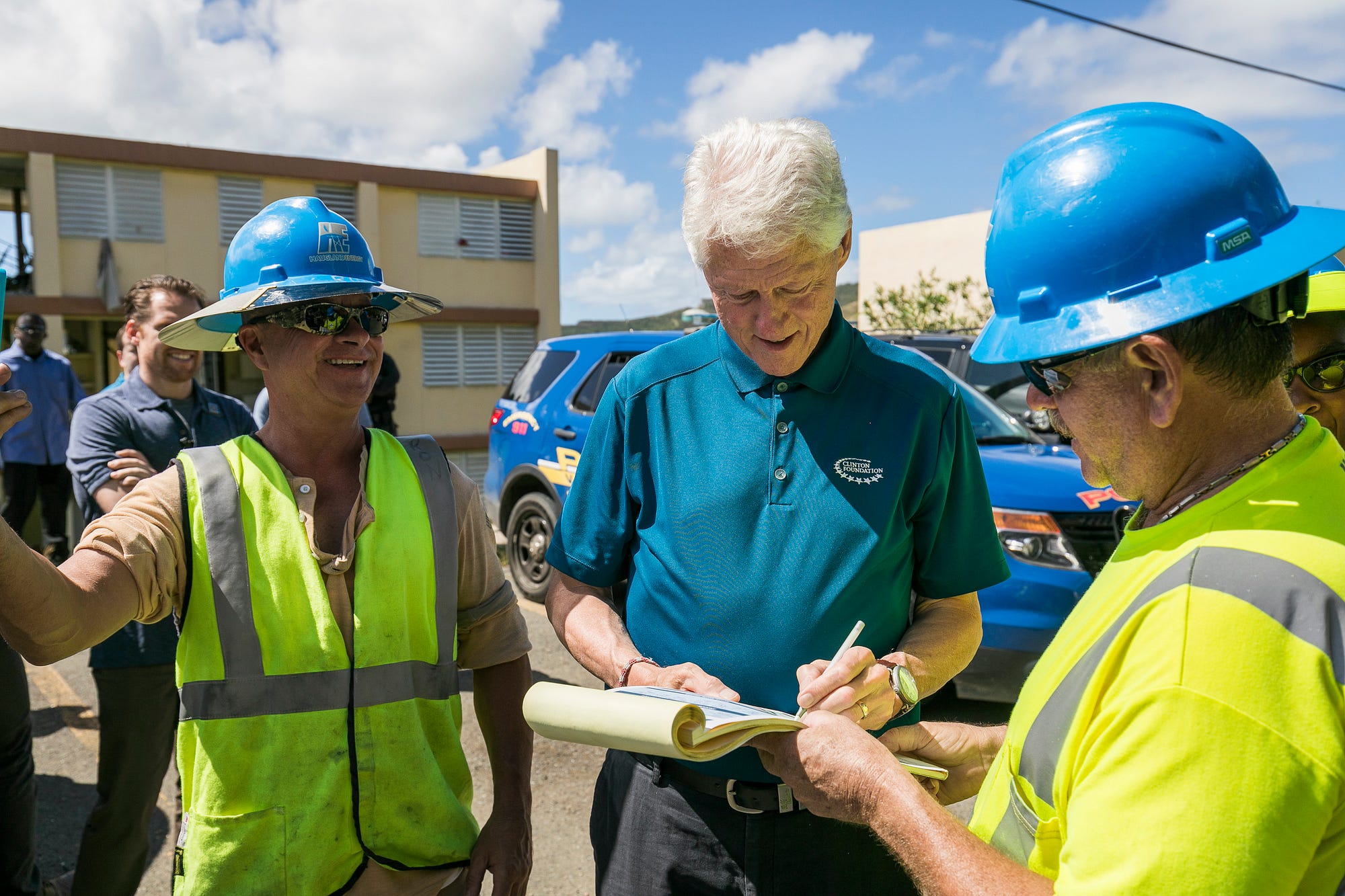asphalt xtreme Cheats / Hack - Obtenez plus de crédits et de jetons!
asphalt xtreme Cheats / Hack - Obtenez plus de crédits et de jetons!
President Bill Clinton and the Clinton Foundation launch effort to support hurricane recovery in…

President Bill Clinton and the Clinton Foundation launch effort to support hurricane recovery in the Caribbean
Effort includes visit to the U.S. Virgin Islands and Dominica to assess damage from last year’s hurricanes and view the islands’ ongoing work to rebuild
By Kevin Thurm, CEO of the Clinton Foundation
Last week, President Bill Clinton visited the U.S. Virgin Islands and Dominica to assess damage from last year’s hurricanes and view the islands’ ongoing efforts to continue building back in the wake of last year’s hurricane season.
The visit is part of a new Foundation effort, the Clinton Global Initiative (CGI) Post-Disaster Recovery Action Network, which will help organizations collaborate across sectors not only to fill the remaining gaps in emergency response but also to help “build back better” and prepare for the future storms that we know are inevitable.
To learn more about the President’s latest visit to the islands, read this report filed by Angel Urena.
The Urgent Call to Action
In September 2017, two Category 5 hurricanes, Irma and Maria, tore through the Caribbean region, causing catastrophic devastation. As response efforts unfolded, partners and supporters of the Clinton Foundation, members of the CGI community, and the local governments of several Caribbean islands approached President Clinton requesting assistance.
In response, we put out a call to action asking partners and members of the CGI community both to address the immediate response needs and to assist with medium- and long-term recovery needs and rebuilding in the region.
The immediate response was tremendous. One of the most powerful examples took place on October 27th, when CGI commitment-maker Direct Relief sent the largest shipment of medical aid to Puerto Rico since Hurricane Maria. The 76-ton shipment, valued at over $21 million wholesale, contained medicines and medical equipment specifically requested by the recipient health facilities.
Less than two weeks later, the Clinton Foundation, the Solar Foundation, Operation Blessing, Direct Relief, and other partners announced a new initiative called Solar Saves Lives, an effort to restore energy at primary care clinics and priority locations throughout Puerto Rico. Shortly thereafter, President Clinton visited Puerto Rico to learn more about the needs on the ground and how Foundation partners were making — and could make — a difference.
Helping the Caribbean Recover
Given the extraordinary response to our call to action, President Clinton formed the CGI Post-Disaster Recovery Action Network to galvanize additional efforts to advance critical hurricane recovery efforts in the region, coordinate longer-term plans, and share best practices and lessons learned.
All organizations participating in the Post-Disaster Recovery Action Network are expected to make a Commitment to Action — a new, specific, and measurable project that will make a meaningful difference on this issue.
And, because recovery and rebuilding can’t be achieved overnight, this work is but an important next step in what will be a multi-year, long-term engagement strategy, modeled after other longstanding CGI Action Networks.
For example, there are lessons to glean from the Foundation’s CGI Haiti Action Network, which began 10 years ago when four hurricanes devastated the country and increased its efforts after the devastating 2010 earthquake. The Haiti Action Network has led to 130 Commitments to Action in Haiti worth more than $500 million when fully funded and implemented, in areas including health, education, energy, agriculture, and infrastructure.
The Post-Disaster Recovery Action Network will formally launch on April 3rd at a meeting of participants at the University of Miami. We look forward to working with our partners to achieve collective and sustainable impact for families in the Caribbean.
We have a unique opportunity to build back in the region in a way that improves people’s life chances not just today but long into the future — and to provide a model for resilient, inclusive development that can help inform and guide future disaster recovery efforts.

